Triceps vs Biceps: What's the Difference?
Too often, you may come across fitness articles that throw around anatomical names for muscles like “triceps” or “biceps” - all without really explaining what exactly they are.
In the most broad of definitions, it could be said that both are muscle groups that encompass the upper section of the arm, and primarily act against one another so as to perform actions with the arm.
The actual mechanics behind such biomechanics go far deeper, and it is absolutely essential for any serious weightlifter to understand how they work in order to better optimize their training.
However, without going into detail about the attachment points, range of motion, and optimal training techniques for the triceps and biceps, we can simplify by stating that the triceps are situated on the back and sides of the upper arms and their primary function is to extend the arms.
On the other hand, the biceps are located on the front and inner side of the upper arm and are responsible for flexing the arm inward.
What are the Triceps?
The triceps brachii - as the name implies - is a three-headed (tri) muscle group situated around the lateral and posterior sections of the upper arm.
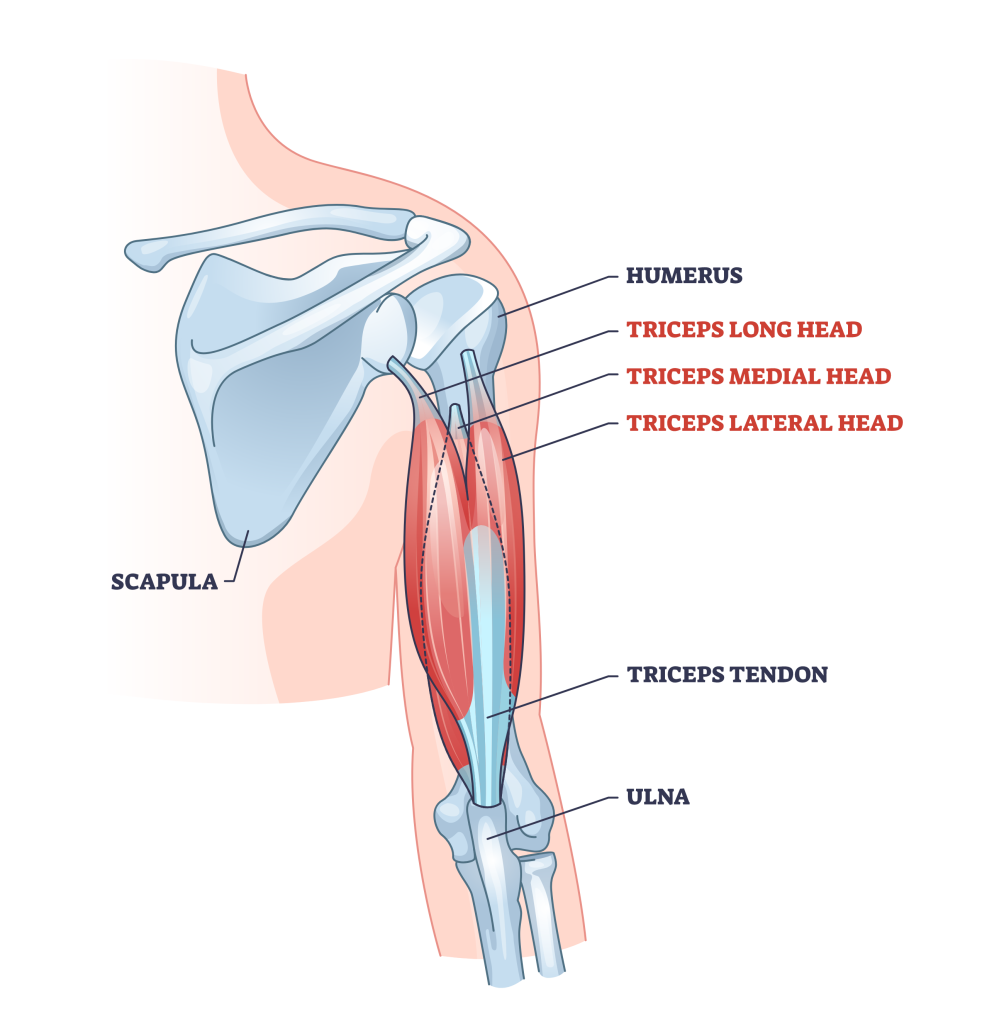
These heads are distinguished into the medial, lateral and long (or inner) head, with each section of the muscle being recruited simultaneously alongside the others - although some are more dominant than others, depending on the range of motion involved.
The triceps is occasionally referred to as the “horseshoe” muscle due to its appearance when flexed by individuals of particularly low body fat composition.
Are Triceps a Push or Pull Muscle?
The triceps brachii is classified as a “pushing” muscle, as they produce force away from the body and are responsible for biomechanics that are normally associated with pushing exercises, like horizontal arm extension or overhead arm stabilization.
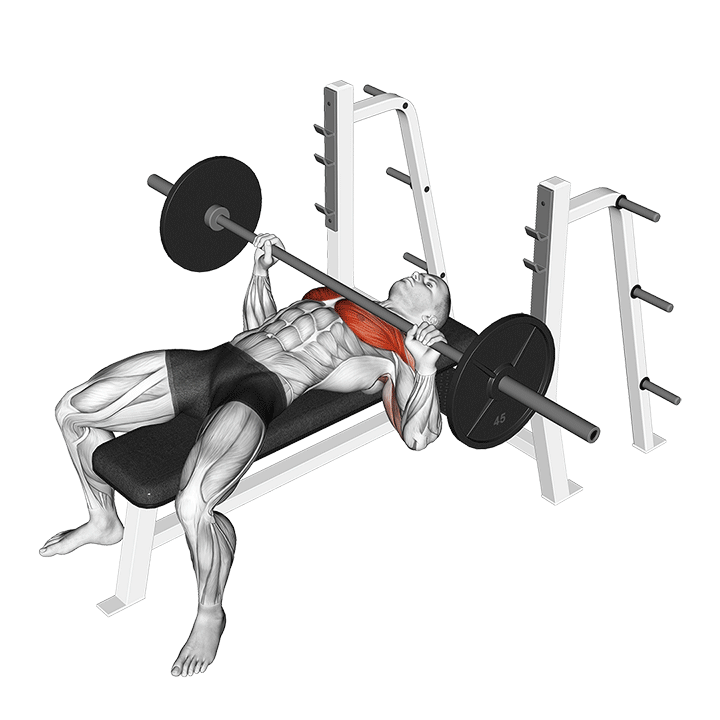
Biomechanical Functions of the Triceps
The triceps brachii are primarily responsible for the biomechanic of elbow extension - or what is otherwise known as straightening the arm away from the body.
Such extension is achieved by a marked shortening or contraction of the triceps along the humerus and ulna, drawing the forearms in alignment with the upper arm.
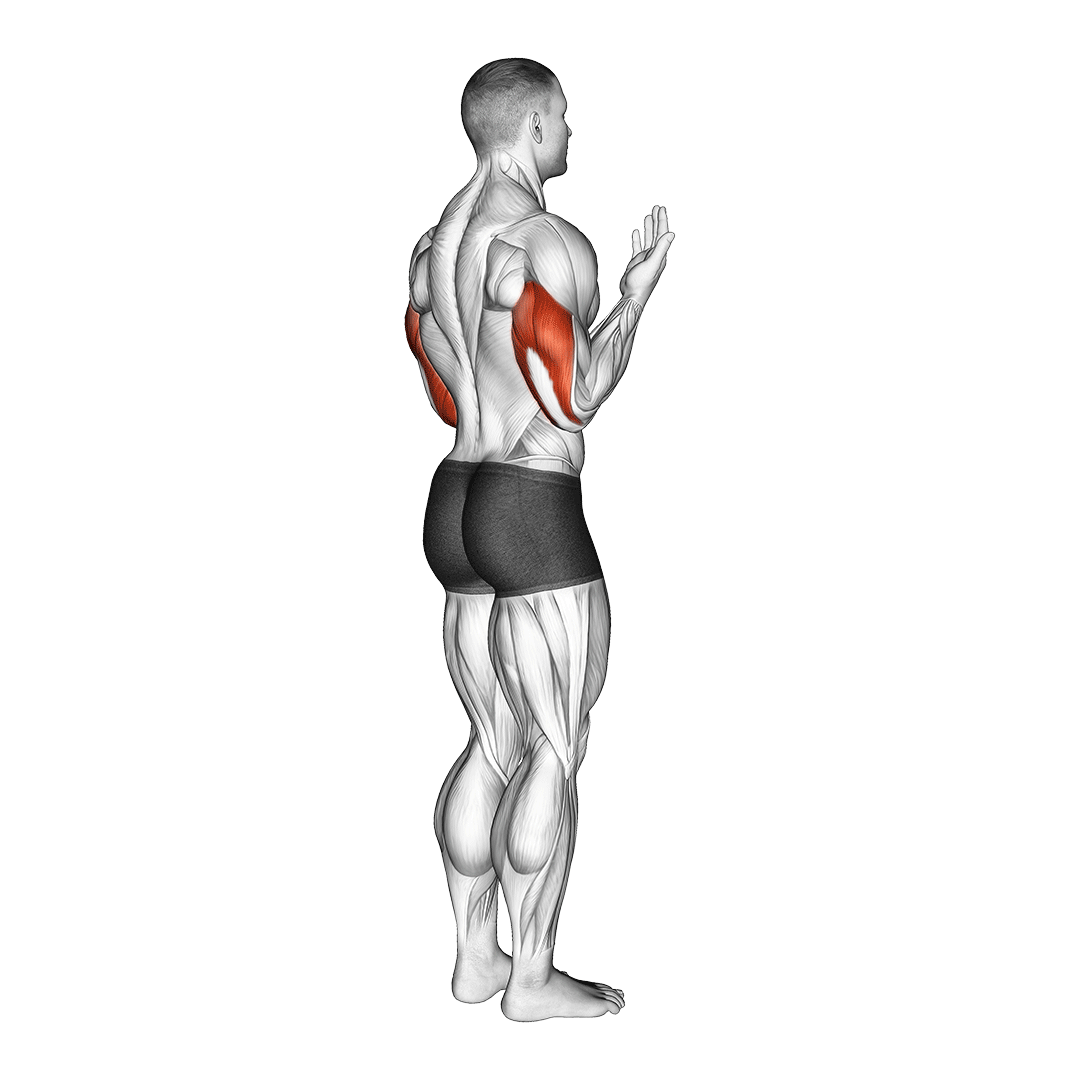
In particular, the lateral head is most active during extension of the forearm as it is in a supinated or pronated orientation, wherein the medial head acts in tandem. The long head also plays a part in this particular biomechanic, albeit in a lesser one due to its scapular attachment point.
Specifically, at a 0° shoulder elevation, the long head is the dominant triceps muscle, whereas between 90-180° of elevation, it is the medial head that outputs the most force.
In addition, the triceps brachii are also responsible for stabilization of the shoulder joint, especially in an overhead capacity.
This is partially attenuated by the long or inner head of the muscle group, as it features an attachment point at the scapula and as such aids in keeping the bone of the upper arm within the socket of the shoulder joint.
Attachment and Origin Points
The long head of the triceps inserts at an outcrop of the ulna bone of the forearms, and an attachment at the scapula.
The lateral head originates from a posterior-facing section of the humerus, and inserts at the same outcrop of the ulna as the long head.
Finally, the medial head of the triceps originates from the same section of the humerus as the lateral head, and inserts at the same ulna process as well.
What are the Biceps?
The biceps brachii is a two-headed (bi) muscle group found at the anterior section of the upper arm. It is particularly well-known due to its prominent appearance when flexed, and is often the subject of focus by many weightlifters.
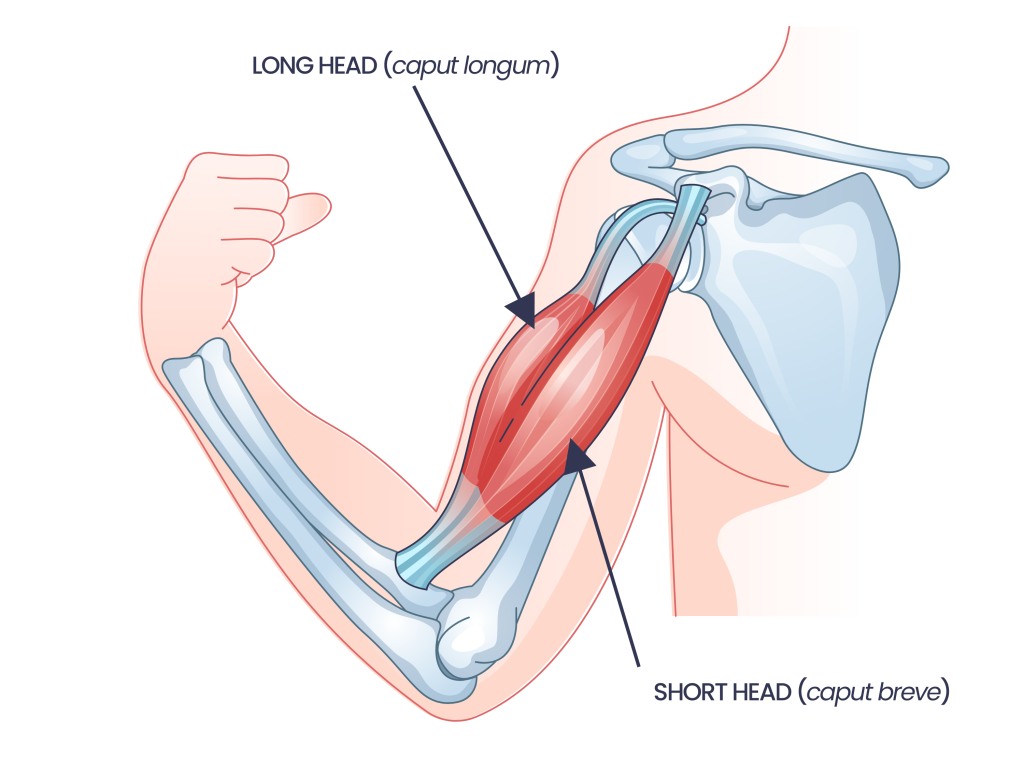
The heads of the biceps are separated according to their situation on the humerus, with the shorter section being dubbed the “inner” head due to its more inward-facing position - and the longer head of the biceps being dubbed the “outer” head, as it is prominently visible when viewing the body from the side or from the front.
These biceps heads converge to form a single muscle bed that attaches to a structure located at the front of the elbow.
While the biceps itself has not earned any widely used nicknames, the inner head is occasionally referred to as the “bicep peak” by bodybuilders, as it forms the highest and most visible portion of the muscle when flexed.
Fun fact - approximately 30% of individuals are found to have a third biceps head, if not even more heads.
Are the Biceps a Push or Pull Muscle?
The biceps is considered to be a “pull” muscle, as it is responsible for biomechanics that are utilized in many pulling exercises like bending of the elbows, rotating the forearms upwards and elevation of the arms in certain directions.
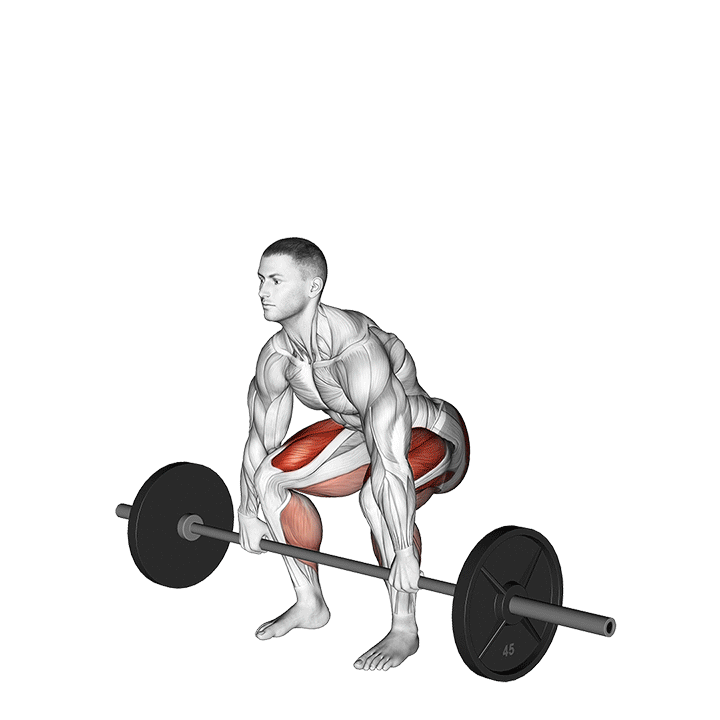
Biomechanical Functions of the Biceps
The biceps brachii is partially responsible for the biomechanic of elbow flexion, where the forearm is drawn towards the torso or shoulders.
The biceps can achieve such an effect by shortening across the humerus, pulling on the radius bone, and drawing the forearm towards the top of the scapula as they do so.

Apart from bending the elbows, the biceps are also responsible for supinating the forearms - a biomechanic that is colloquially known as turning the palms up. This can occur regardless of whether the forearm is facing palms-down (pronated) or if the palms are facing each other (neutral orientation).
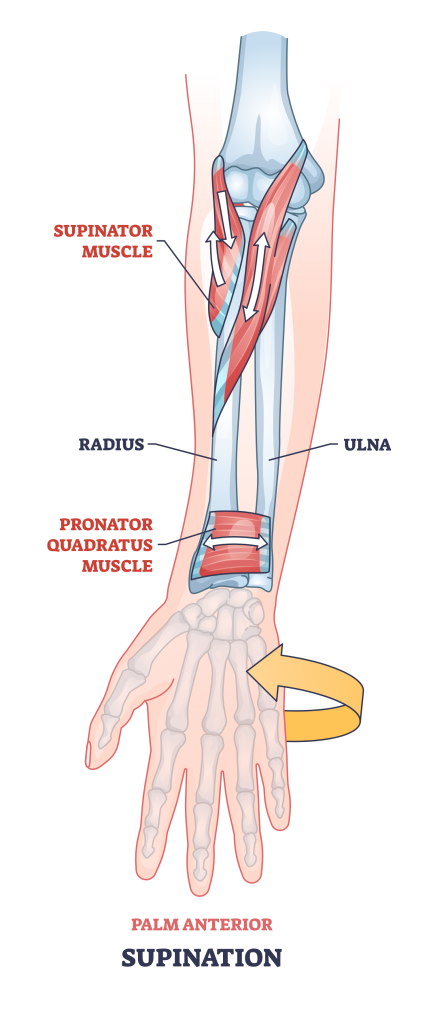
During elbow flexion at 90°, it is the short head that is dominant, whereas the long head outputs more force when supinating the forearm while it is in an already-supinated orientation. During supination of the forearm as it is in a neutral and pronated forearm orientation, the short head is once again more dominant.
Finally, the biceps brachii play a lesser role in shoulder flexion, where the long head enhances the stability of the joint during dynamic movement while it is within the initial 30° range; This occurs regardless of whether the elbow is flexed or extended.
Attachment and Origin Points
The short head of the biceps originates from a process at the top of the scapula and converges with the long head before inserting at the proximal side of the radius bone.
The long head of the biceps originates from the supraglenoid (shoulder-adjacent) portion of the scapula, where it trails down the humerus before meshing with the short head and inserting in much the same section of the radius.
How do the Triceps and Biceps Relate to Each Other?
Skeletal musculature and its functions are characterized by the production of opposing movements - one muscle, an agonist and the other, the antagonist.
This allows for control over dynamic movements, safe dispersal of mechanical tension and general stabilization of the joints.
Due to their opposite anatomical positions, the triceps and biceps are considered to be antagonists of one another.
During arm flexion, the biceps fulfill the role as the agonist, with the triceps as the antagonist. This means that the biceps will contract and the triceps will relax in kind (pictured below).
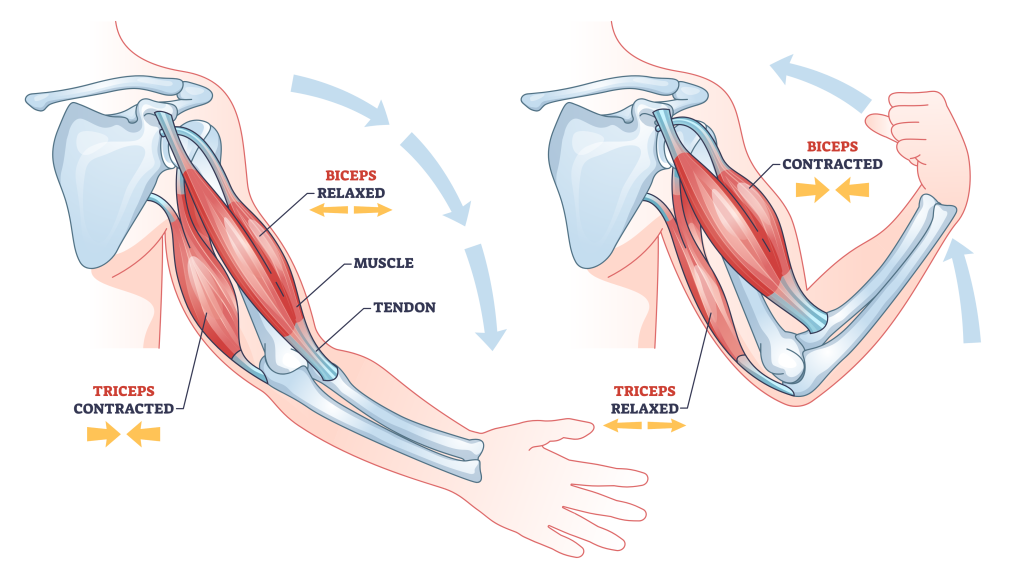
During extension, the opposite is true, with the triceps as the agonist and the biceps as the antagonist - where the triceps will contract or shorten, and the biceps will lengthen and relax.
This two-sided oppositional movement allows the lifter to protect their elbow and shoulder joints, to return their arm to a neutral position and to otherwise stabilize their upper limbs as they move.
However, this does not mean that the antagonistic muscle will hypertrophy or grow stronger - only that when one is utilized, the other will also respond in kind.
Which Muscle is Stronger, the Triceps or the Biceps?
In terms of pure force output (without accounting for specificity of training), it is generally the biceps brachii that are considered to be stronger than the triceps brachii on a gram-for-gram basis, as they are not only utilized to a greater extent by daily activities, but are also smaller and feature fewer heads despite the fact that they are antagonistic to the triceps brachii.
Of course, this may not be the case for individuals that specifically train their triceps - especially for powerlifters and bodybuilders who regularly perform exercises like the overhead press and bench press.
Which Muscle is Bigger, the Triceps or the Biceps?
Even in individuals who have never participated in resistance training, the triceps brachii are generally larger and account for far more of the upper arm’s muscle mass than the biceps brachii do.
This is a result of the fact that the triceps feature an additional head (3, rather than 2), and that they span a far wider distance than the biceps.
Of course, size does not equate to strength or functionality, and it is entirely possible for weightlifters with suboptimal training to have biceps that are visually larger than their triceps.
The Most Effective Triceps Isolation Exercises
The triceps brachii are primarily composed of fast-twitch muscle fibers, meaning that the correct training choice for hypertrophy is to maintain a high level of resistance and a low-to-moderate level of volume.
While this doesn’t mean max out on a tricep cable pushdown, it does mean that keeping your repetitions below 20 per set is the best approach for building your triceps brachii.
Tricep Kickbacks
Often performed with a dumbbell but also possible with a kettlebell or weight plate - the tricep kickback is a single joint isolation exercise that involves the lifter bending at the hips and extending their arms behind them as they grip said weights.

The tricep kickback is excellent for emphasizing the lateral head, and is most often programmed for 2-4 sets of 8-20 repetitions.
Overhead Extensions
Overhead extensions are performed with anything from a pair of dumbbells to a cable machine, but the general mechanics remain much the same.
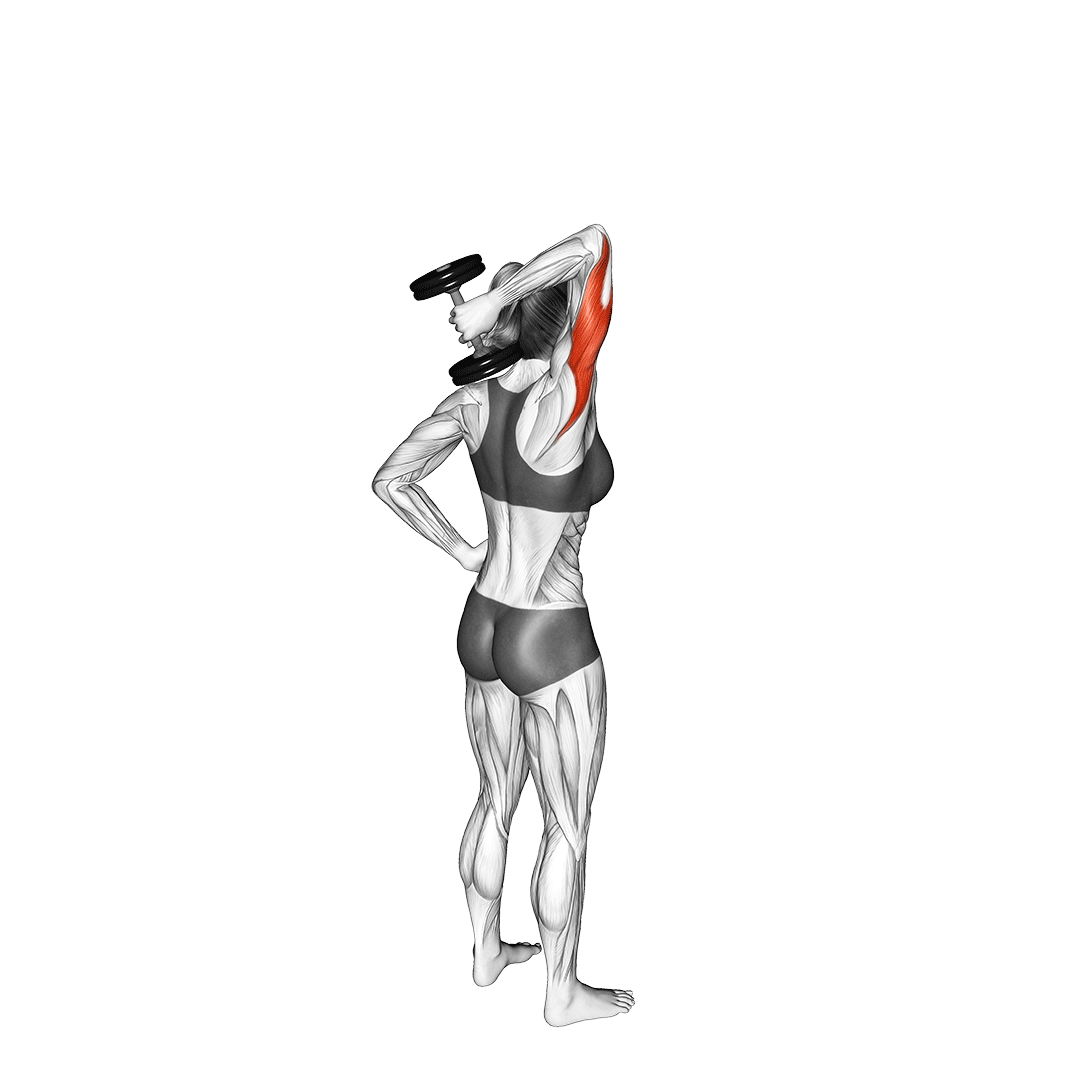
The lifter will raise their arms over their head and extend their forearms against resistance that is moving in a vertical path downwards, innervating the triceps and placing further emphasis on the long head of the muscle group.
Although care should be taken due to the precarious position of the shoulders and arms, lifters should nonetheless use a moderate level of resistance and seek to perform anywhere between 2-4 sets of 8-16 repetitions.
Triceps Pushdowns
Tricep pushdowns are traditionally performed with the use of a cable machine or resistance band, as they require resistance moving upwards, and as such are not quite possible with free weight equipment.
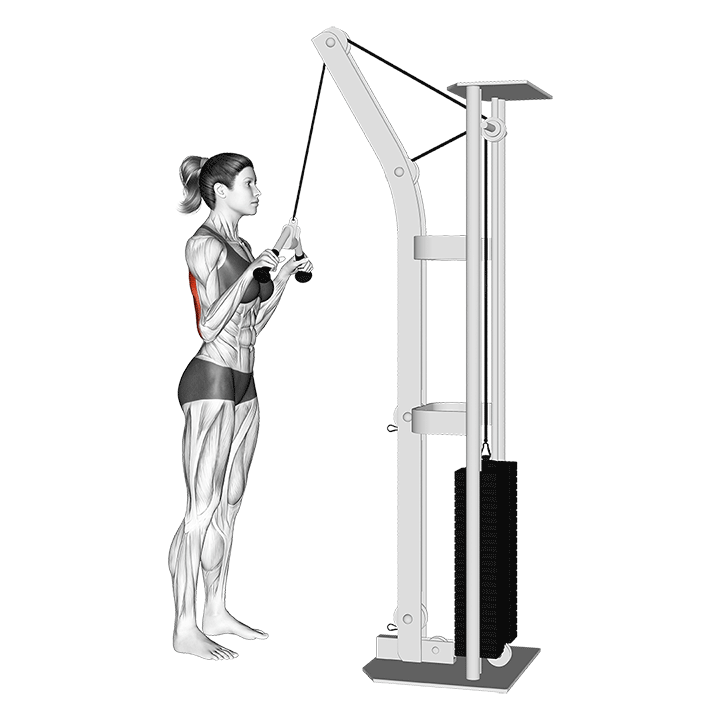
Nonetheless, tricep pushdowns involve the lifter extending their arms downwards as their arms remain in a pronated position - often with counter-resistance to a force moving vertically upwards.
This places a particular emphasis on the medial and lateral heads of the muscle, and is often programmed for 2-4 sets of 10-20 repetitions.
The Best Biceps Isolation Exercises
The biceps brachii are primarily composed of fast-twitch muscle fibers, and as such are known to respond better to a moderate-volume and high-resistance approach, rather than the traditional high-volume low-resistance one.
Lifters should take caution when performing intermediate or heavy biceps exercises, however, as they are more prone to injury and inflammation when subjected to high tension than their triceps counterpart.
Bicep Curls
The classic biceps curl is the best example of a biceps training exercise, as it is both simple in execution yet highly effective at working both heads of the muscle group.
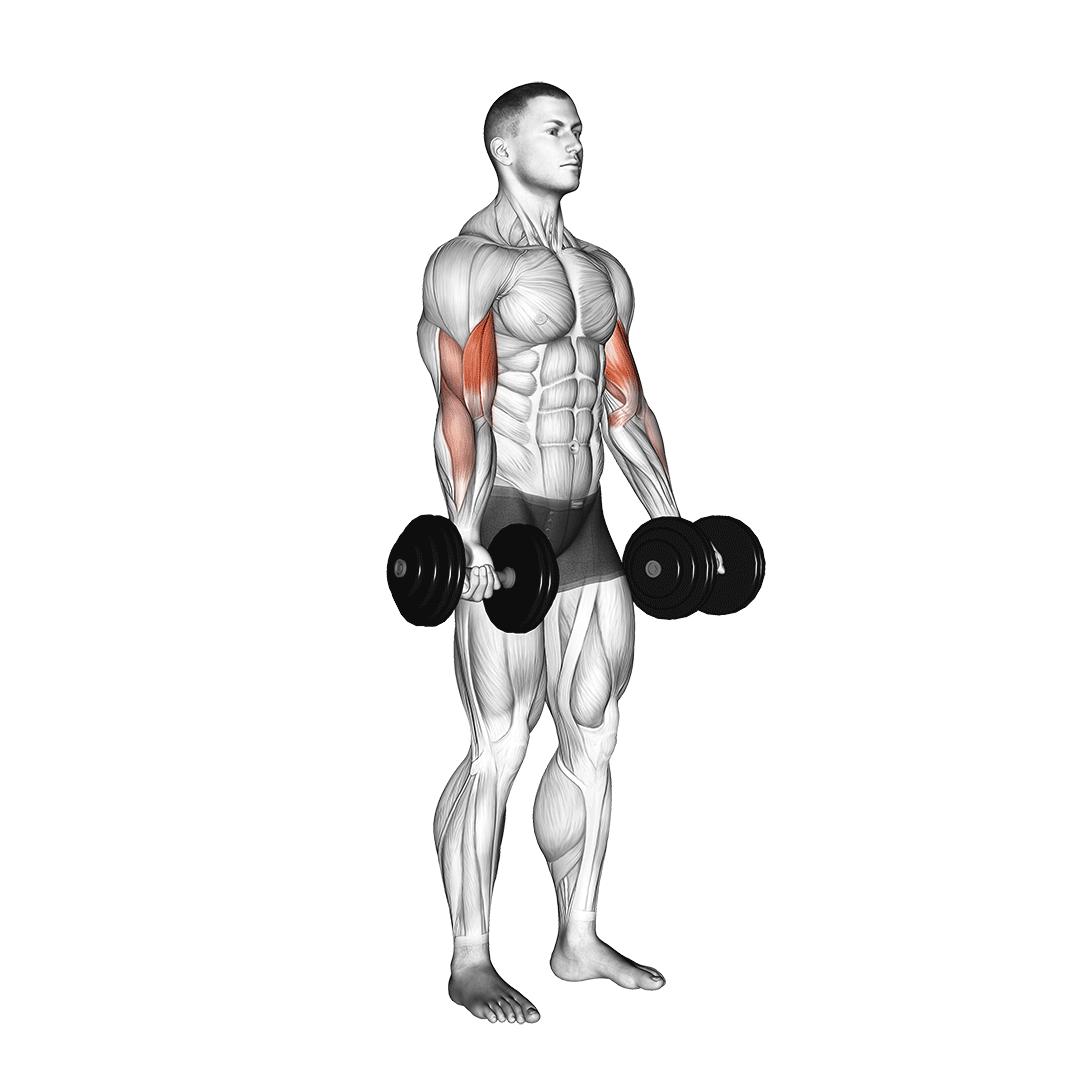
If you’ve never seen one before - the bicep curl is performed with the lifter holding a weight in their hand before they curl their forearm upwards. This elicits a greater response in the short head of the biceps, although both heads are trained quite effectively.
For a balance between volume and resistance, bicep curls may be performed for 2-3 sets of 8-16 repetitions each.
Hammer Curls
Less an isolation exercise but nonetheless a biceps one; the hammer curl is excellent for targeting the long head of the biceps brachii along other elbow flexor muscles located in the upper arm.
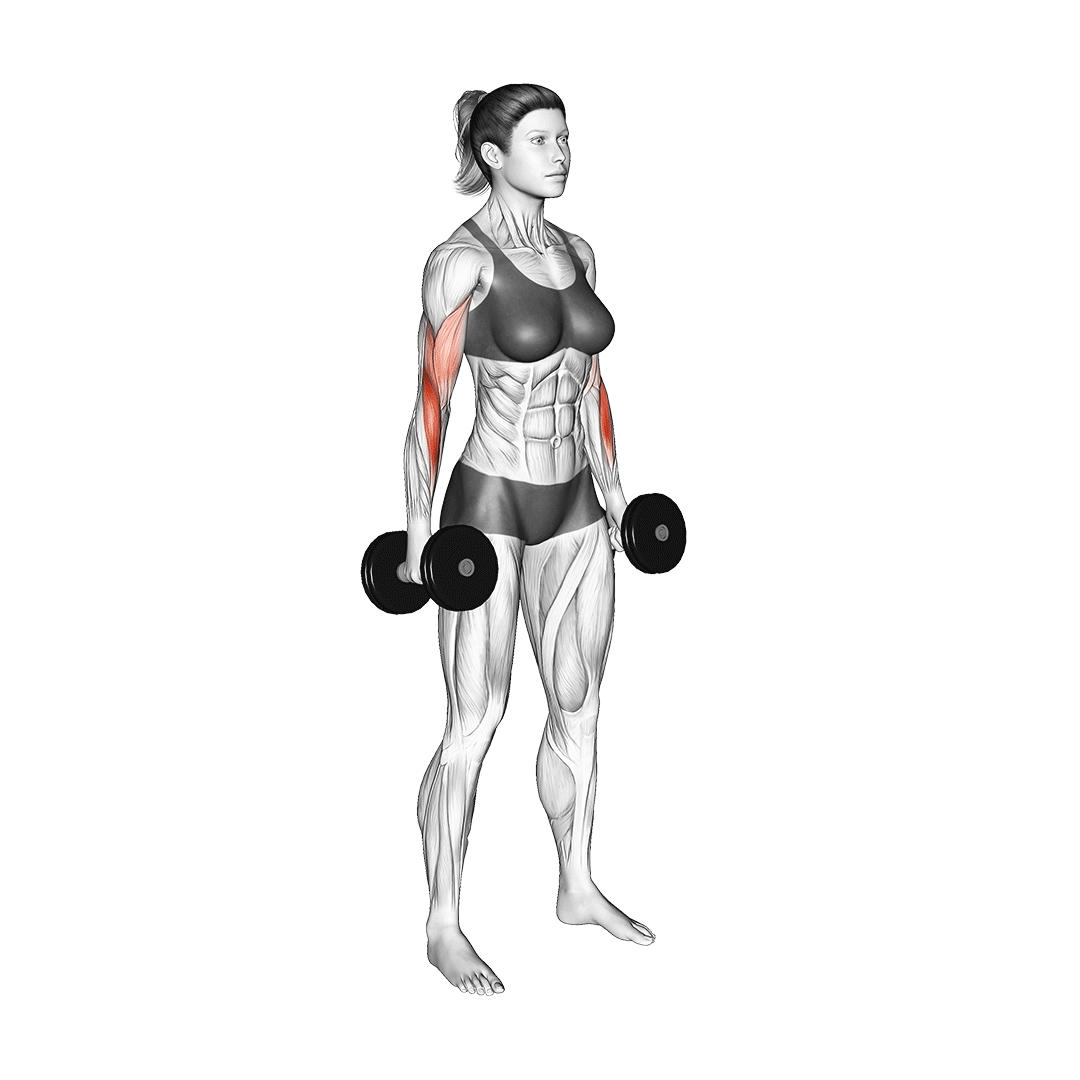
It is mechanically similar to a bicep curl where the lifter will hold a weight in their hand and flex their forearm upwards - but instead of a supinated grip, a neutral one is used.
Although it will vary depending on the strength of the forearms and elbow flexors, hammer curls are most effective as a biceps builder when performed for 2-4 sets of 8-16 repetitions.
Preacher Curls
For lifters wishing to truly isolate their biceps, there are few exercises as effective as the preacher curl.
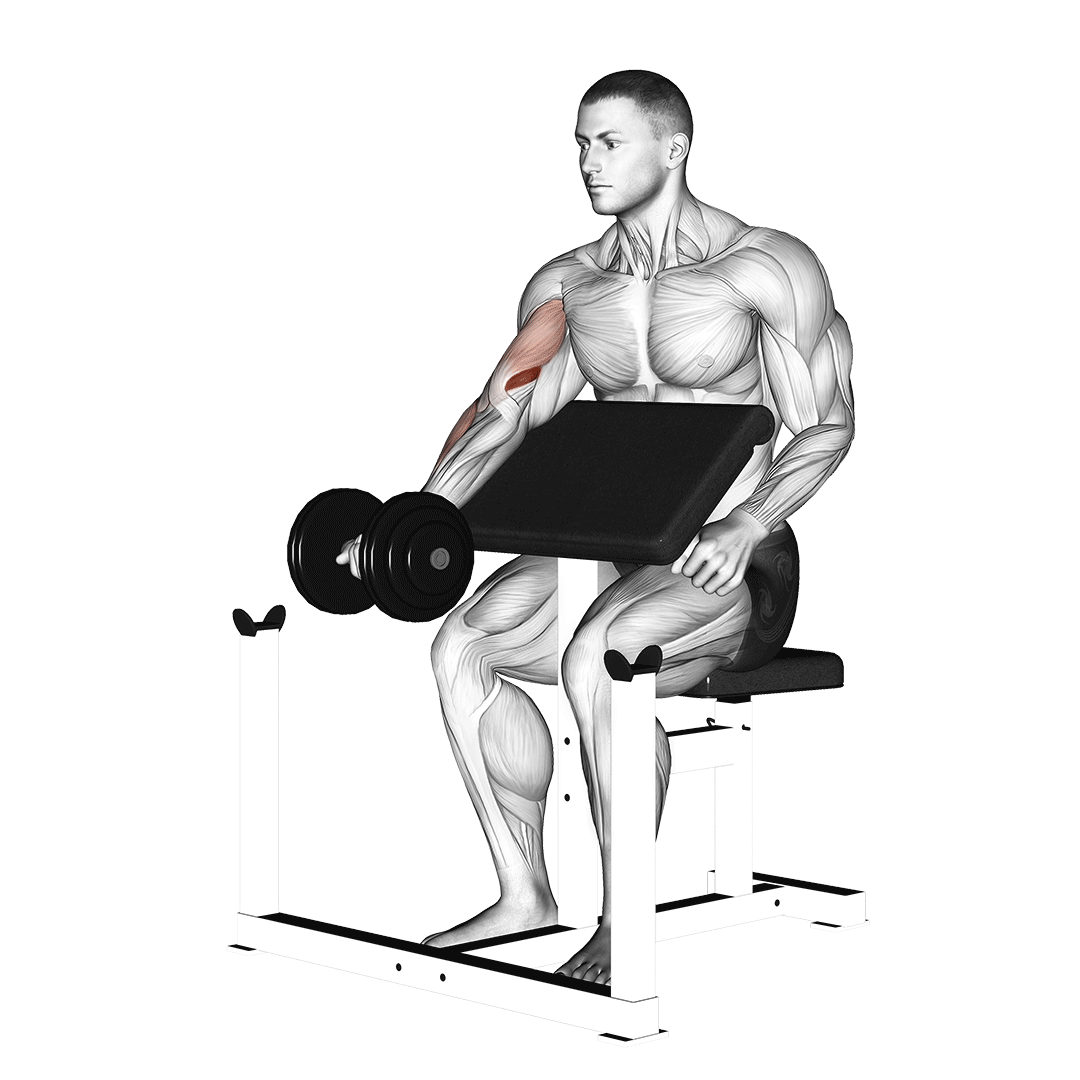
The preacher curl is mechanically identical to the bicep curl, only with the elbows locked into position with the use of a preacher bench. This eliminates the risk of poor form, and further activates the heads of the biceps brachii in equal measure.
Because preacher curls isolate the biceps so well, it is advisable to start with a lesser amount of weight. 3 sets of 15-20 repetitions is perfect for lifters new to the exercise.
Frequently Asked Questions (FAQ)
Should my Biceps be as Strong as My Triceps?
Not necessarily.
While the biceps may be stronger in untrained individuals as a result of their daily activities, the ideal ratio of strength between the two muscles is somewhere around 1:1 - meaning that the triceps and biceps should be capable of eliciting approximately the same amount of force.
Why is Training Triceps Harder Than Training the Biceps?
If a triceps workout tires you out more than a biceps workout, it may be because your triceps are generally utilized less by daily activity, and as such have yet to fully adapt to being worked so hard.
Another reason may be that the triceps are both greater in mass and feature an additional head in comparison to the biceps, thereby necessitating further energy expenditure.
Should You Train Biceps or Triceps for Bigger Arms?
Both - while the triceps make up more of the upper arm than the biceps do, both muscles should be trained in equal measure so as to produce a balanced and functionally-fit arm.
Final Thoughts
The biceps and triceps are the two most prominent - and trained - muscles of the upper arms, but remember that there are more than just the two muscles therein.
The brachioradialis, brachialis, and the various muscles of the forearms should also be trained alongside the triceps and biceps for a healthy and strong upper body.
Remember to consult a professional athletic coach if you are unsure of how to go about training any part of your musculature - and to seek out the advice of a physician if you suspect that your triceps or biceps are injured.
References
1. Kholinne E, Zulkarnain RF, Sun YC, Lim S, Chun JM, Jeon IH. The different role of each head of the triceps brachii muscle in elbow extension. Acta Orthop Traumatol Turc. 2018 May;52(3):201-205. doi: 10.1016/j.aott.2018.02.005. Epub 2018 Mar 2. PMID: 29503079; PMCID: PMC6136322.
2. Jarrett, Claudius D et al. “Anatomic and biomechanical analysis of the short and long head components of the distal biceps tendon.” Journal of shoulder and elbow surgery vol. 21,7 (2012): 942-8. doi:10.1016/j.jse.2011.04.030
